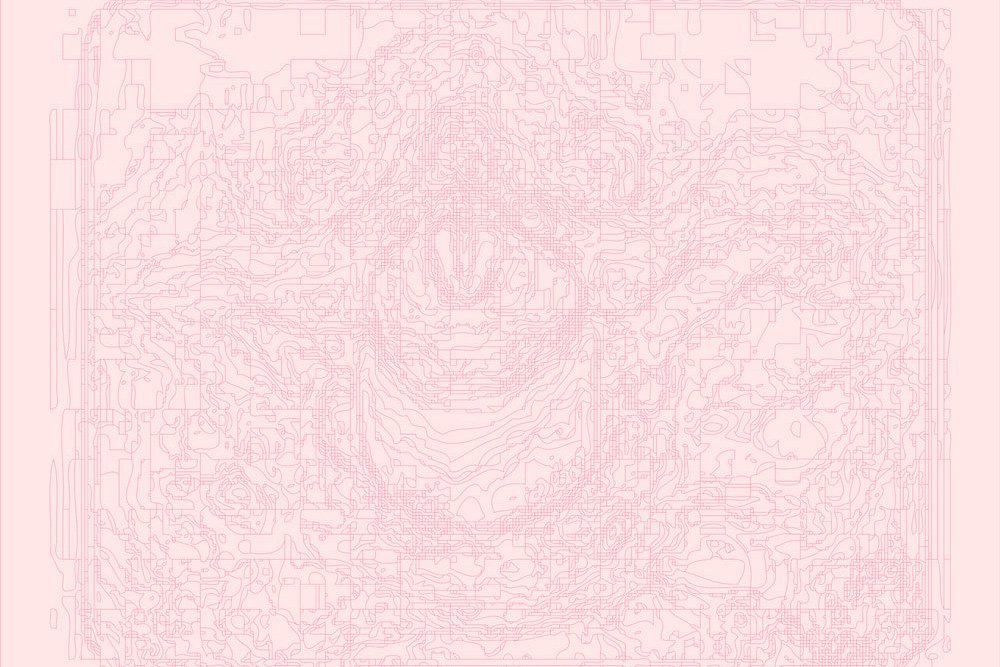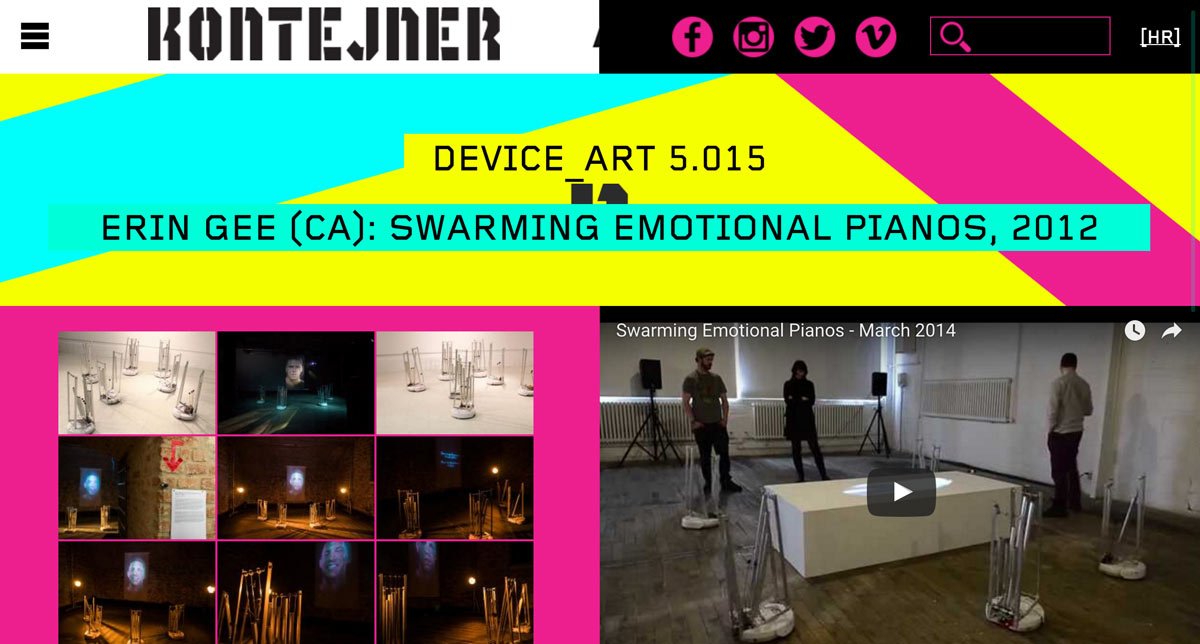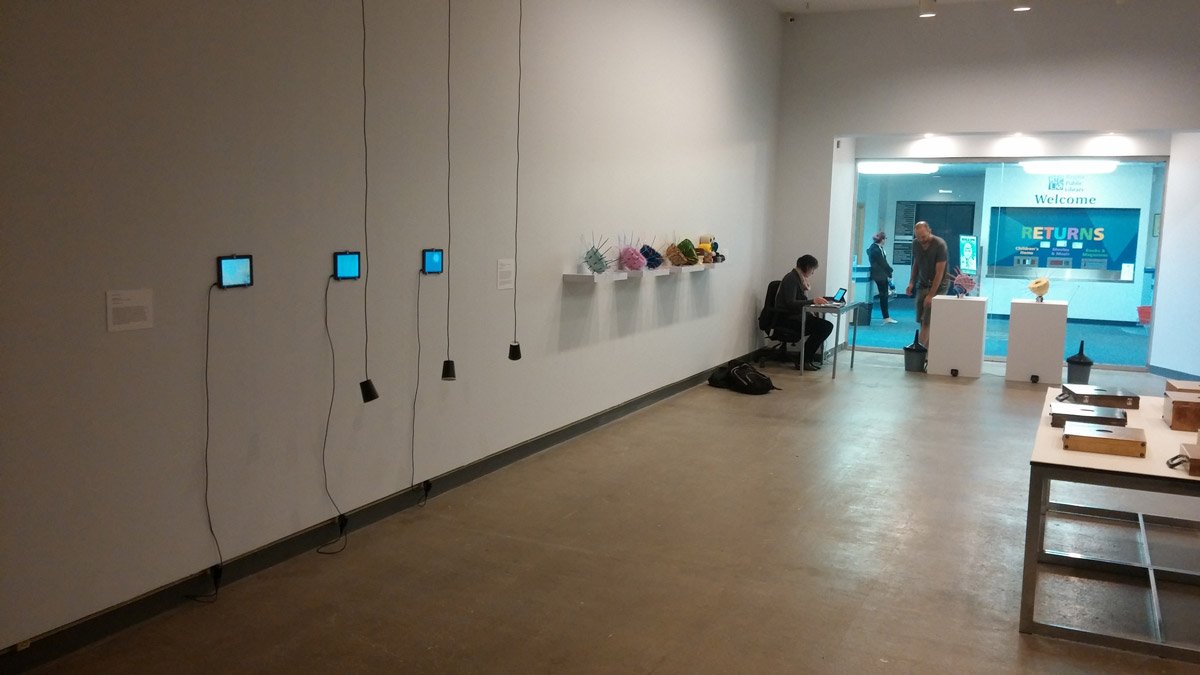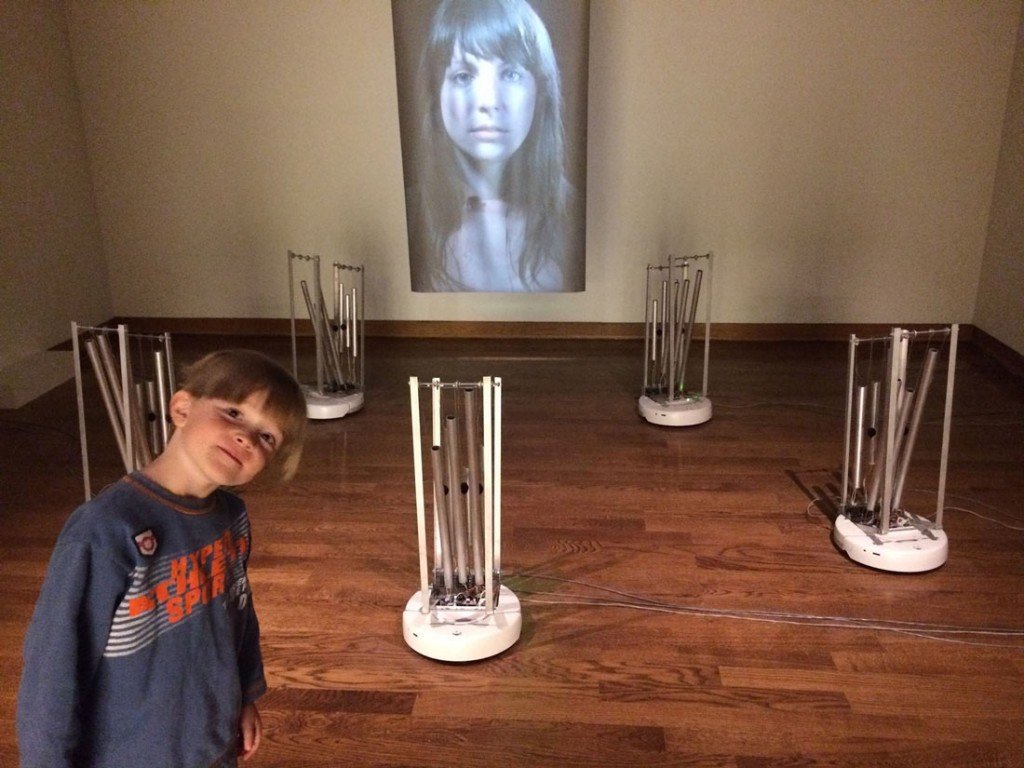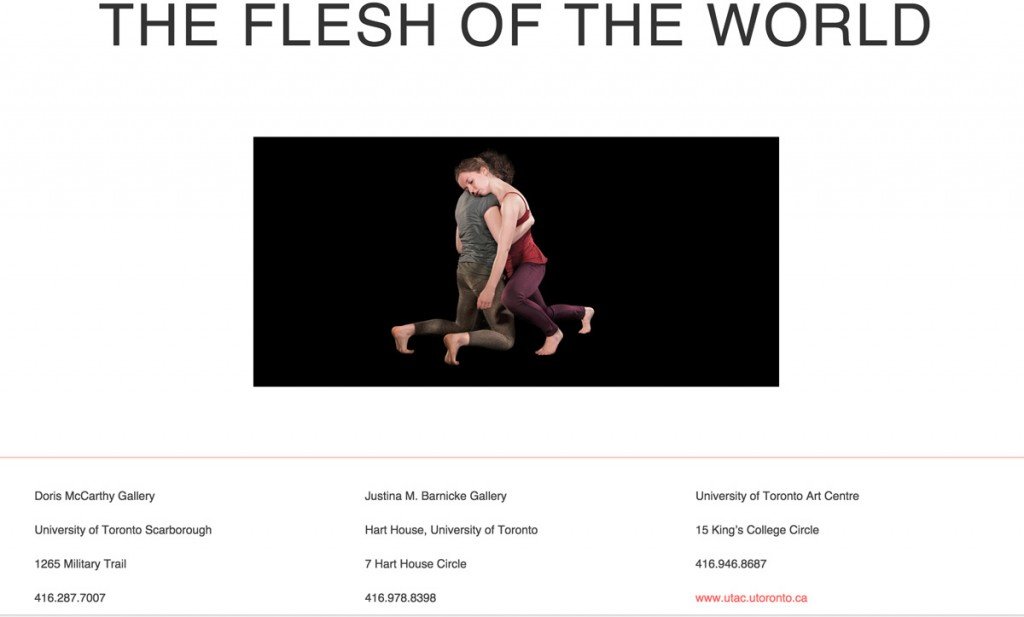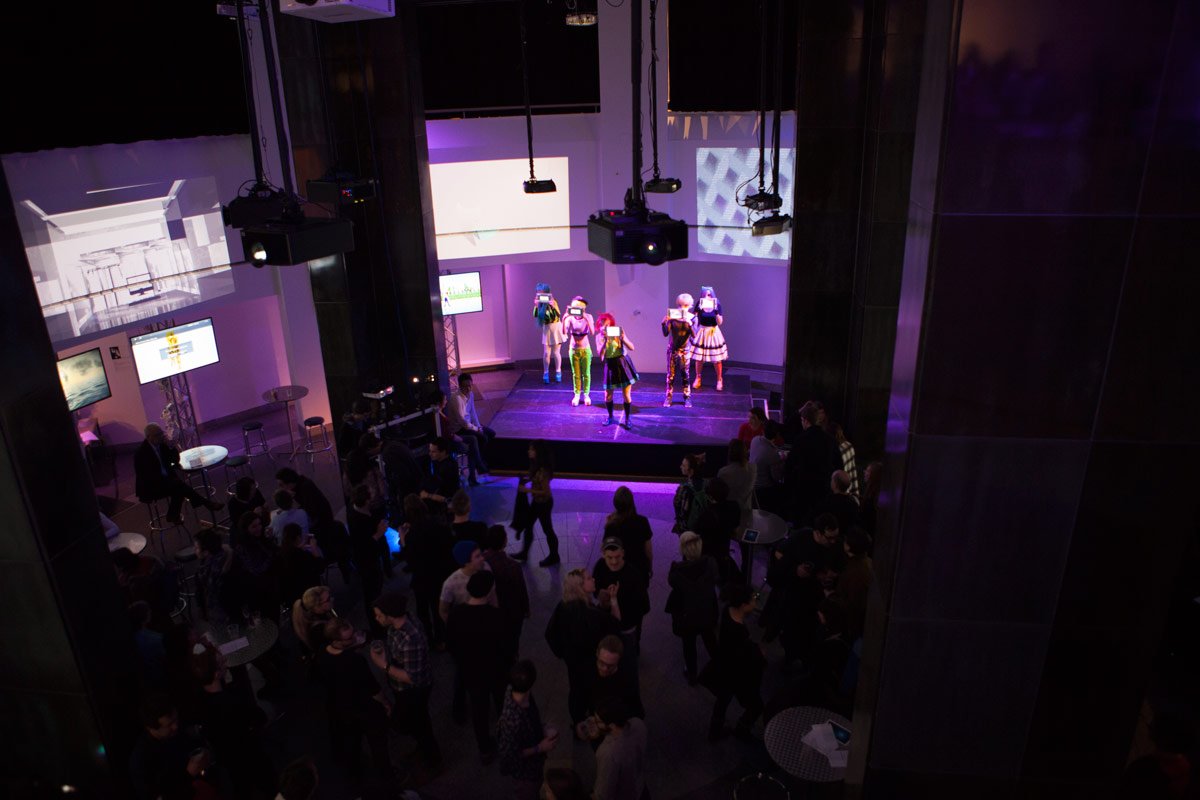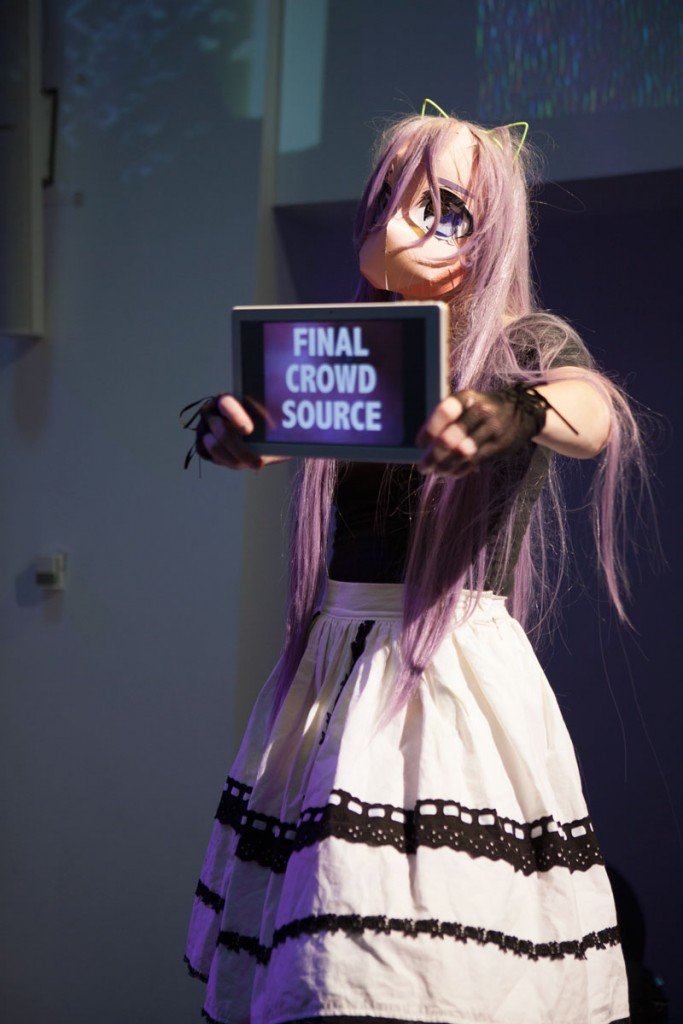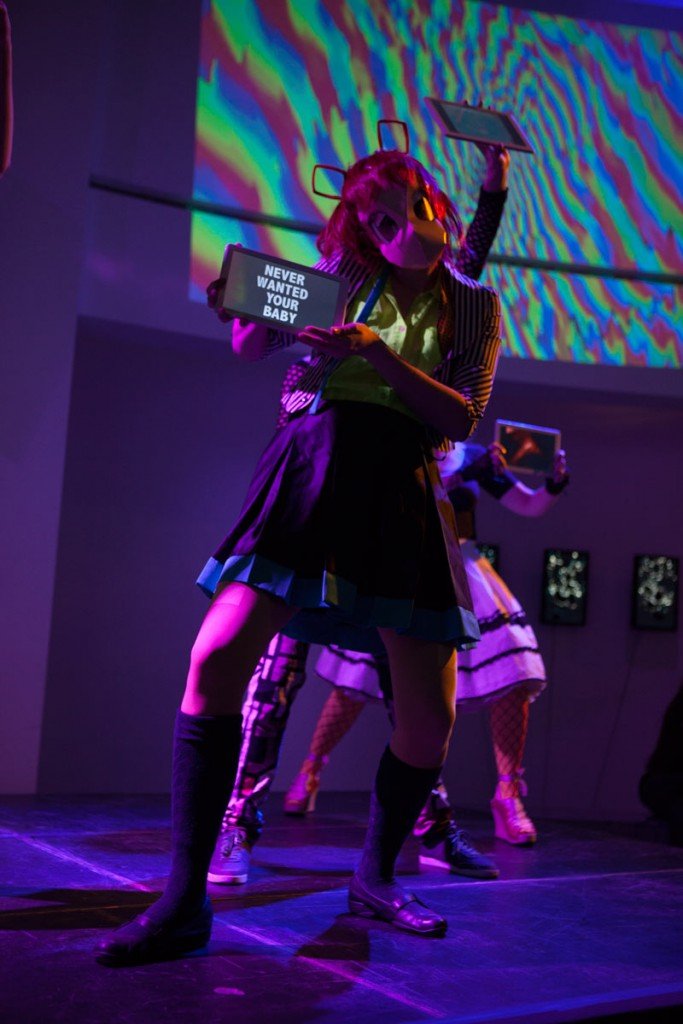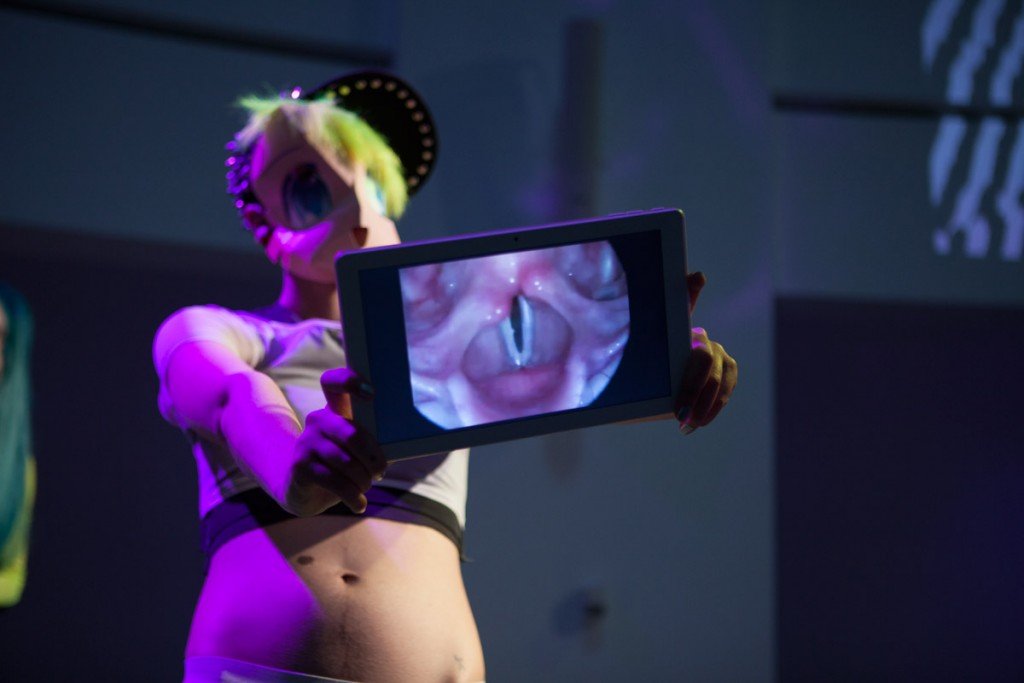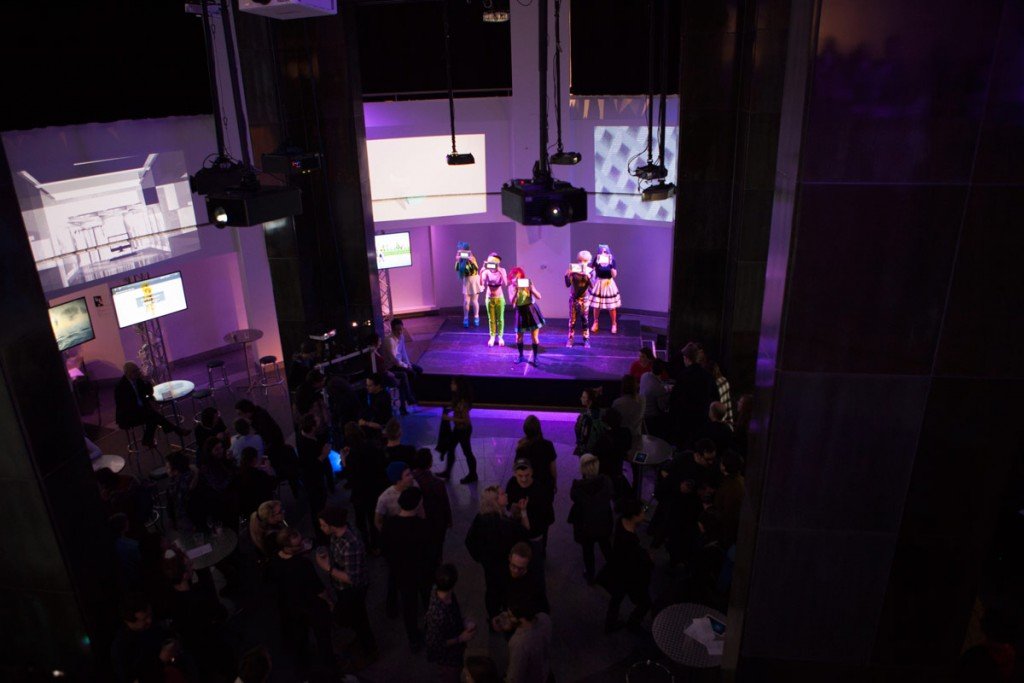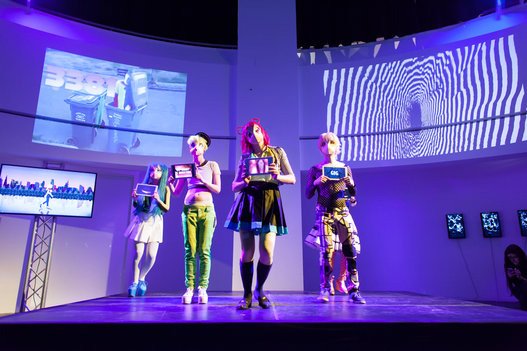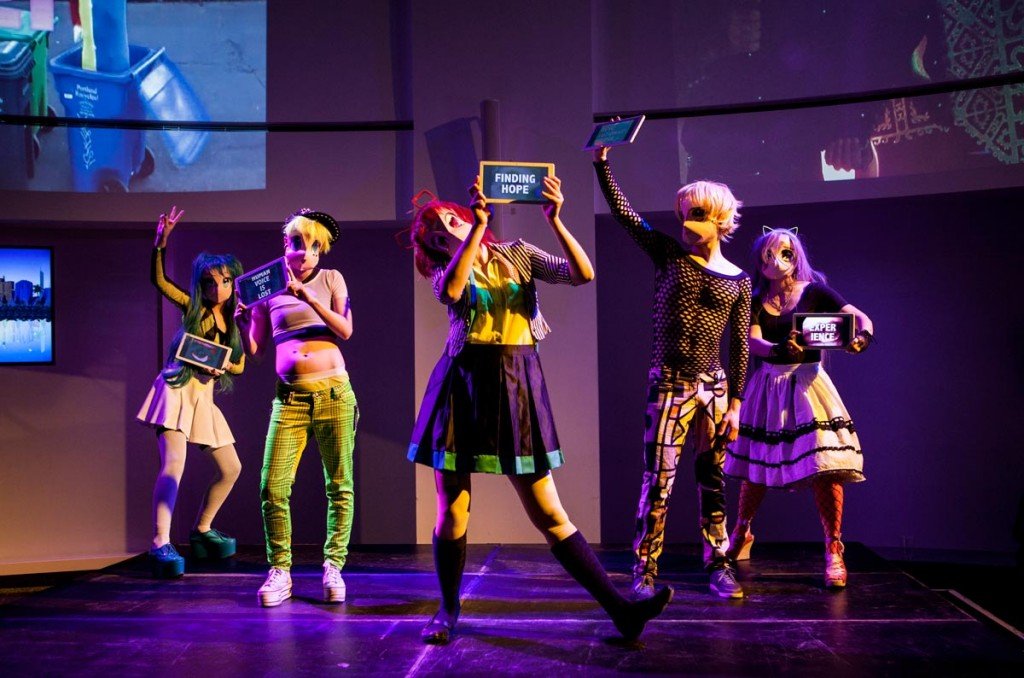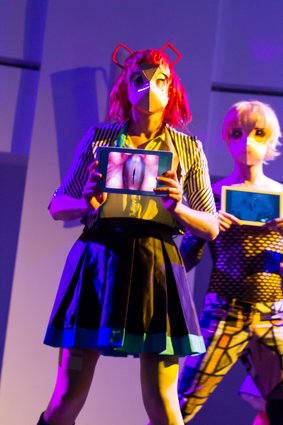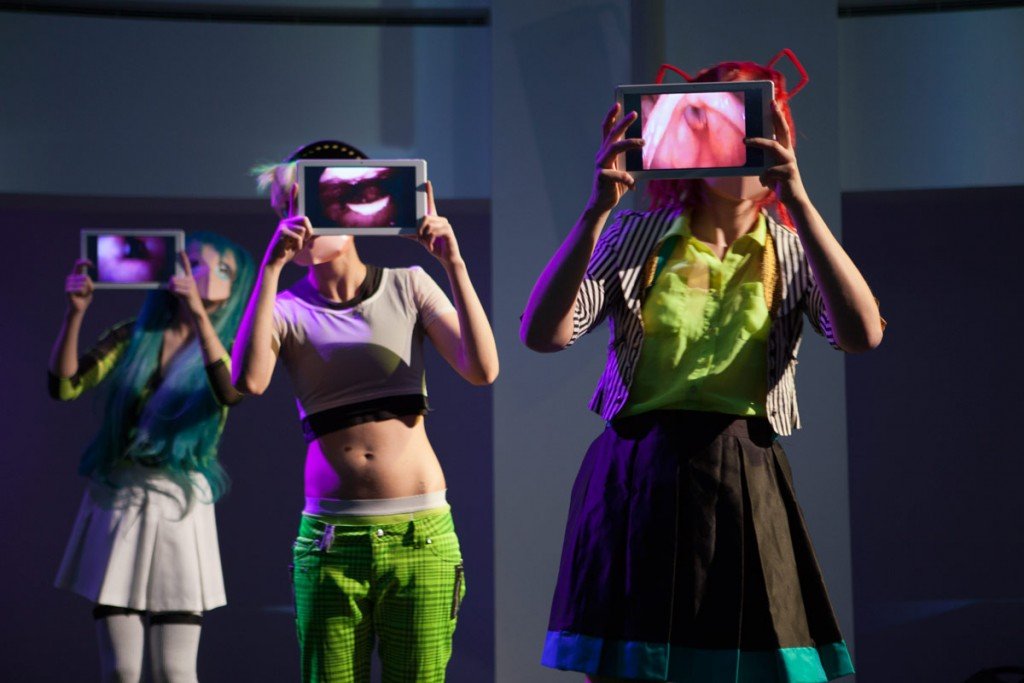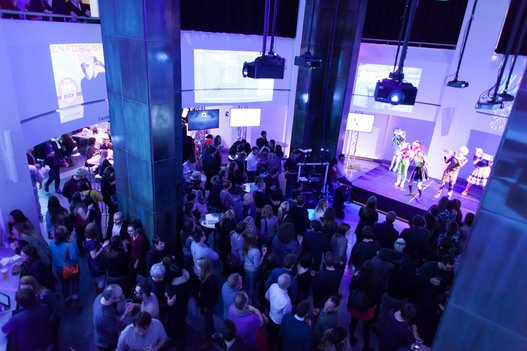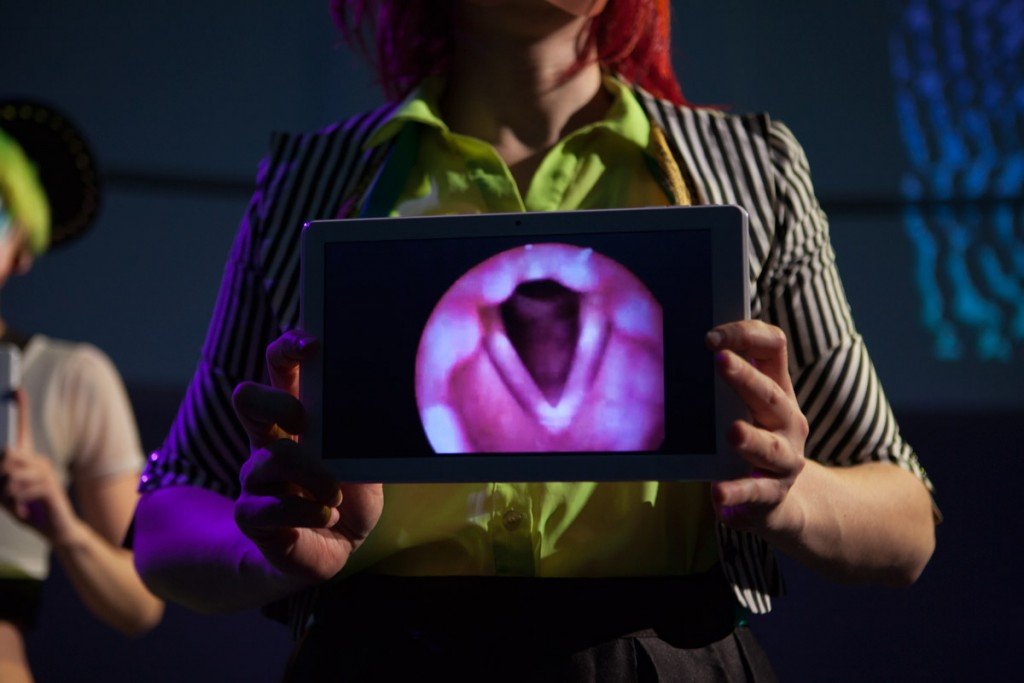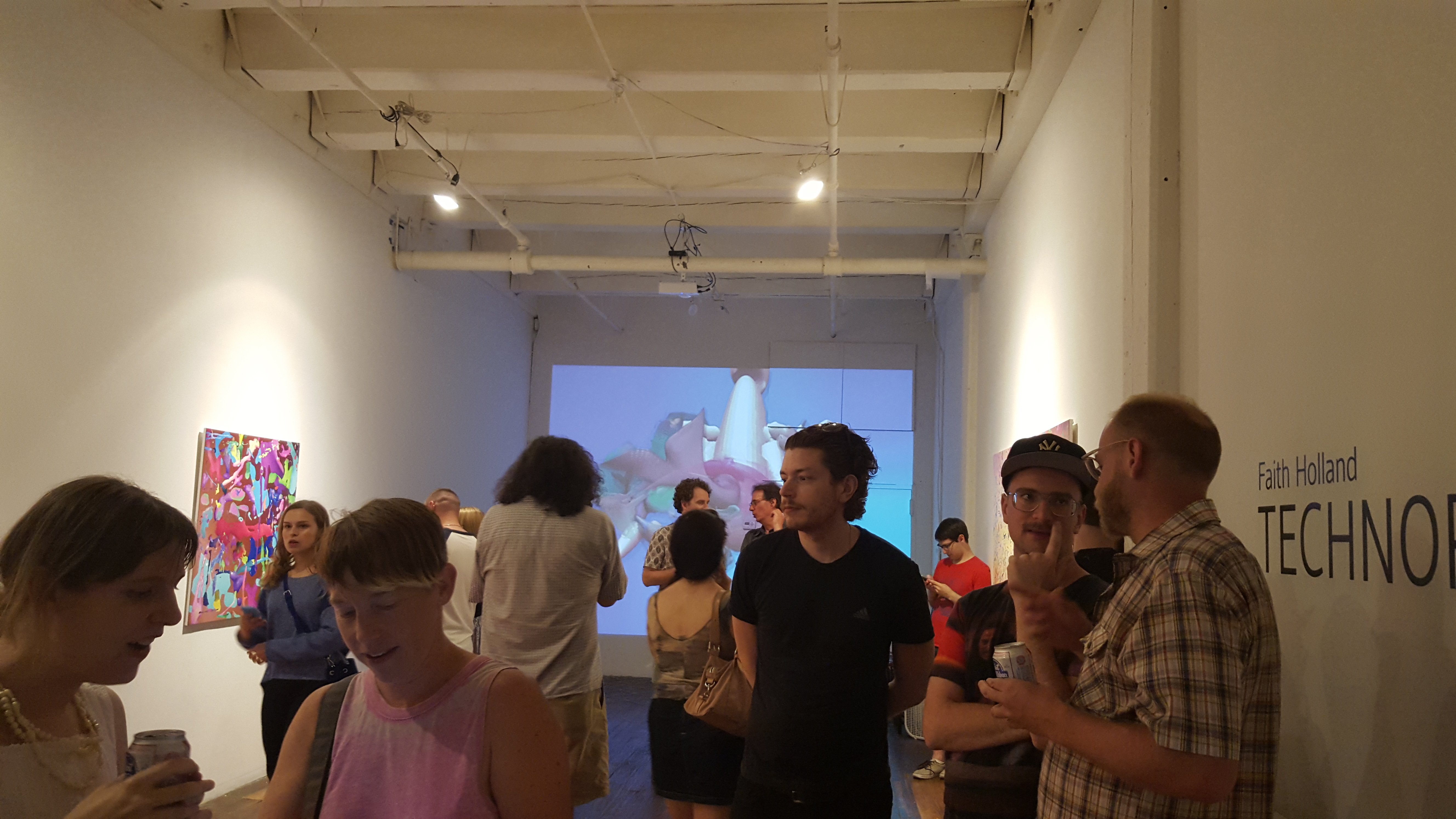Larynx Series
Larynx1, Larynx2, Larynx3, Larynx4 (2014)
Epson UltraChrome K3 ink on acid-free paper.
Edition of 5.
86 x 112 cm.
2014
What we consider our voice in a technologically mediated environment is a visual-vocal-technological assemblage that implicates amplification, scale, human and digital bodies and networks. The multiplication and proliferation of voice on someone else’s device happens in asynchronous ways, much the same as a vocal score is a vocal performance that lay crystalized and dormant until activated by human action.
This series of printed works is a set of vocal quartets created from the original material of the human voice, the larynx, which was amplified/reproduced/echoed through visual perception processes in machine and human cognizers and re-performed by multiple human singers. In endoscopic photography the flesh material of the larynx is extended through the sensory mechanisms of a machine. Light bounces off the flesh of the larynx and is interpreted by a camera as pixel data. This digital image is made of raster pixels faithful to their fleshy origins but limited in detail. If one amplifies the raster image of the voice (zoom) the image reveals its materiality as a technical assemblage. I transformed the raster image into a vector in order to continue playing with bouncing machine processes off one another to “voice” how a machine might perceive this human larynx. While the rasterization process I used eliminated the fleshy details of the original larynx, the image emphasized original architectural structures of the larynx, which now more closely resembled a topographical map, or circuit board. This technologically processed version of the larynx could be infinitely amplified or diminished without loss or distortion. At this point I detected an unexpected feature: my associative, human perception could see markings that resembled Western notation at the edges of this transformed image of the human voice, complete with staves, bar lines and notes. My transcription process included dividing each bar into four equal parts, and then transcribing rhythms in a linear relationship to where the small note-like marks were present horizontally in common 4/4 time. Pitches were interpreted as they appeared vertically on the abstracted staves.
Since there exist four sides to each two-dimensional image, there were four staves for each representation of the larynx in the series. I set this music into four separate vocal partitions for choral song: returning this technologically amplified process of voicing back into multiple human throats.
Exhibition/Performance history
MacKenzie Art Gallery January 2020.
Toronto Bienniale November 2019.
Vocales Digitales – Solo exhibition. March 26 – May 14 2016, Hamilton Artists’ Inc.: Hamilton, Canada. Curated by Caitlin Sutherland.
Rhubarb, rhubarb, peas and carrots, 2015. Dunlop Art Gallery. Regina, Canada. Curated by Blair Fornwald. Larynx Songs premiered with singers Erin Gee, Carrie Smith, Kristen Smith, and Kaitlin Semple.
(Premiere Performance) Rhubarb, Rhubarb, peas and carrots. July 17-September 5, 2015. Dunlop Art Gallery: Regina, Canada. Curated by Blair Fornwald.
Erin Gee and Kelly Andres. August 25 – October 24, 2014. Cirque du Soleil Headquarters: Montreal, Canada. Curated by Eliane Elbogen.
Voice of Echo (Solo Exhibition), 2014. Gallerywest. Toronto, Canada. Curated by Evan Tyler.
(Performance) Tellings: A Posthuman Vocal Concert. Toronto Biennial. Curated by Myung-Sun Kim and Maiko Tanaka.
Collections
Larynx3 (edition 1/5) was purchased by the Saskatchewan Arts Board for their permanent collection in 2019.


